Menu
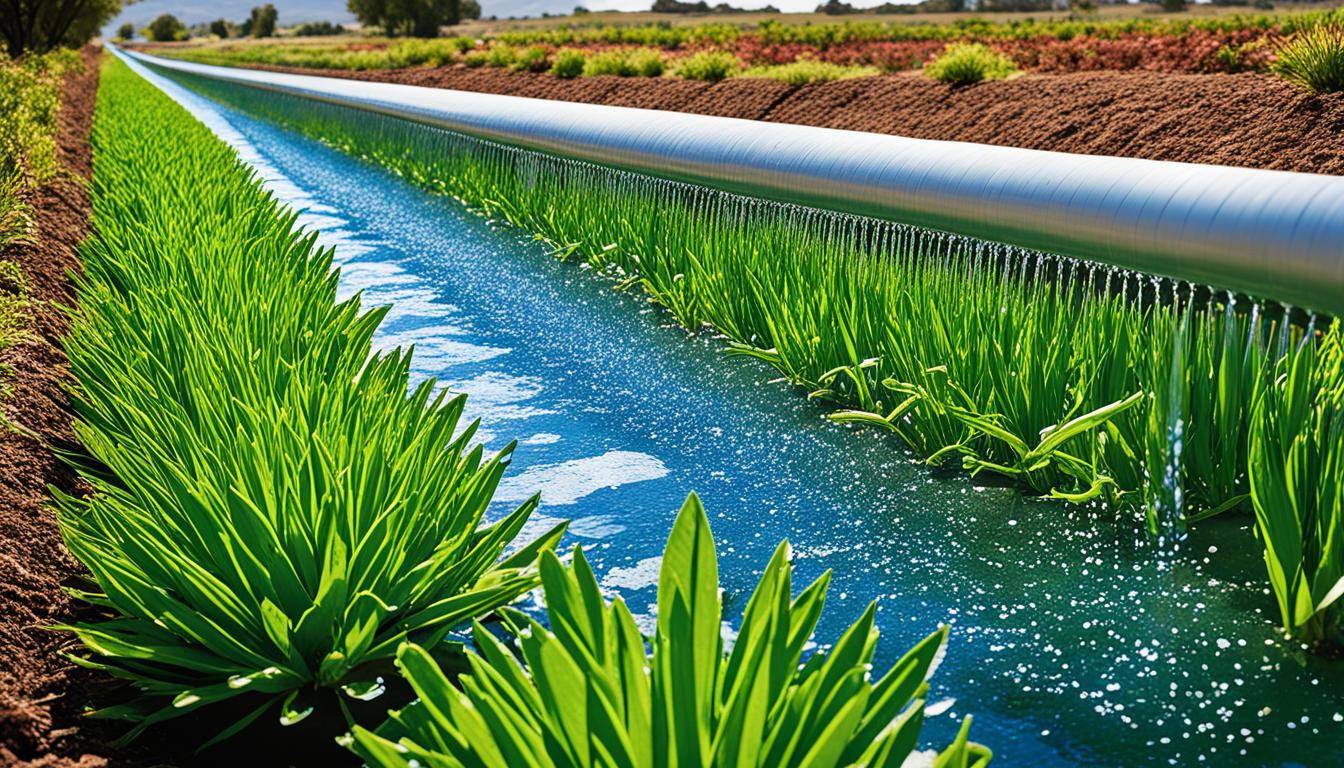
Have you heard? The number of startups working on water management has reached 3771 worldwide. This shows how crucial it is to deal with climate change and the growing global population.
Research into water management points to the urgent need for climate-smart and sustainable water solutions. Findings from the StartUs Insights Discovery Platform highlight 3771 startups globally. Among them, the Netherlands and the US stand out for their work. These companies are developing new methods for processes like desalination, wastewater handling, and saving water. They’re not only changing how we recover and reuse water but also offering affordable and eco-friendly solutions that protect against floods.
With the aid of data, these startups are helping water companies use artificial intelligence, IoT, and smart meters for better water monitoring. Technologies for treating wastewater, such as advanced oxidation and adsorption, are also making water reuse more efficient. Plus, the use of nanotechnology in filters is improving the removal of pollutants from water.
This talk highlights how promising startups are leading the way in sustainable water management. We mention companies like PipePredict, SPHERAG, and Oxyle. They are key in the movement towards a sustainable water future.
At the heart of today’s big challenges is the vital work of looking after our water. This job is even more important now because of climate change and more people needing water. Sustainable Development Goal (SDG) 6.5 makes sure we focus on *water resource management*. It pushes the world to think about how to grow our economy and reduce poverty while caring for our water supply.
Securing our water supply needs a big plan that looks at everything. The Global Solutions Group (GSG) for Water Security and Water Management plays a key role. It helps build the skills and strength needed to protect our water sources. Water security is not just about giving out water. It’s also about using water well to help, not hurt, our world. This smart, careful approach is all about making choices based on good info and facts about water.
Water affects everything – from homes and jobs to nature. Because it’s all linked, we need a plan that covers everything. This plan can help us use water better, provide reliable water services, and cut down on risks. By managing water well, we make sure we’re ready for the challenges of today and tomorrow.
The Fresno State Master of Science in Water Resource Management is a great example of how learning can help. Over 2.5 years, students study 30 topics that include water tech, business, and laws. There’s also a chance to work in the field during a special internship. Students finish off their studies by working on a big project.
In closing, keeping our water safe is a job for everyone. It needs smart plans, good management, and the will to save water. Combining teaching, like at Fresno State, with real actions in managing water helps a lot. Working together in smart ways, we can look after our water for a strong future.
Right now, we’re seeing big changes in how we manage water. New tech is at the heart of these breakthroughs. In 2024, the big stories are digital water systems and better filters. This all comes from a deep dive into 3771 world startups. The goal was to spot the best at cutting carbon and managing water.
Digital systems are key to using and saving water wisely. They use AI, IoT (Internet of Things), and smart meters to watch and control water networks live. These tools are great because they give us precise info. They also let us manage water from far away. Startups like PipePredict are showing how to find and stop water leaks. And SPHERAG’s use of IoT is saving water and power on farms.
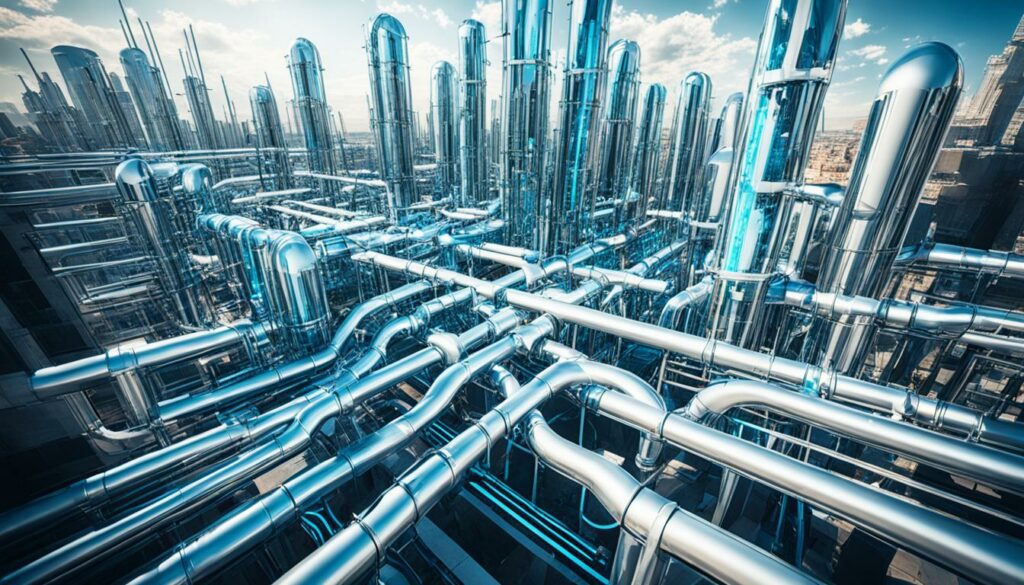
Next-level filters are making water cleaner and greener. They use special nano, special oxidation, and the power of sun to take out more pollutants. Companies like Nanoseen lead the pack with filters that work without power. And then there’s WarraniumMBR. It’s a new breed of filters that are super tiny but work really well.
| Technology | Startup | Key Features |
|---|---|---|
| Digital Leakage Detection | PipePredict | Real-time water grid monitoring, AI-based predictions |
| Agricultural Water Management | SPHERAG | IoT sensors, optimised water and energy use |
| Filtration Nanomembranes | Nanoseen | Gravity-powered, energy-independent, rapid purification |
| Membrane Bioreactor | WarraniumMBR | Ultra- and microfiltration capabilities |
We’ve found that using water-saving tech and getting communities involved changes how we manage water. This is vital for dealing with today’s water issues. Both new tech and local people playing a part are key for a green future.
New tech helps cut down on water use a lot. For instance, weather-smart irrigation systems save loads of water in towns. In homes where water for the garden is big, there’s been a huge drop in use.
Rainwater systems and ground changes for sports fields, though not fixing it all, are a big help. They save water too, as studies have shown.
Trying to pay people to save water hasn’t worked well in Eastern parts of the US. They’ve run tests to see what water schemes work best. These have given us great advice on how to move forward.
Getting everyone involved in saving water is very important. Using social media and apps to join forces can help a lot. This is key, especially in dry areas, to save as much water as we can.
Checking and fixing homes and acting as a group save loads of water. These things make water-conscious living popular. This is how we make real progress in saving water.
People reacting well to saving water, especially outside (-4.81). Inside water savings work well too (-4.51). This shows that public and smart policies do make a difference.
Hydrological studies are key for understanding water. They provide data about how much water there is and its quality. This data helps make plans and strategies for managing water better.
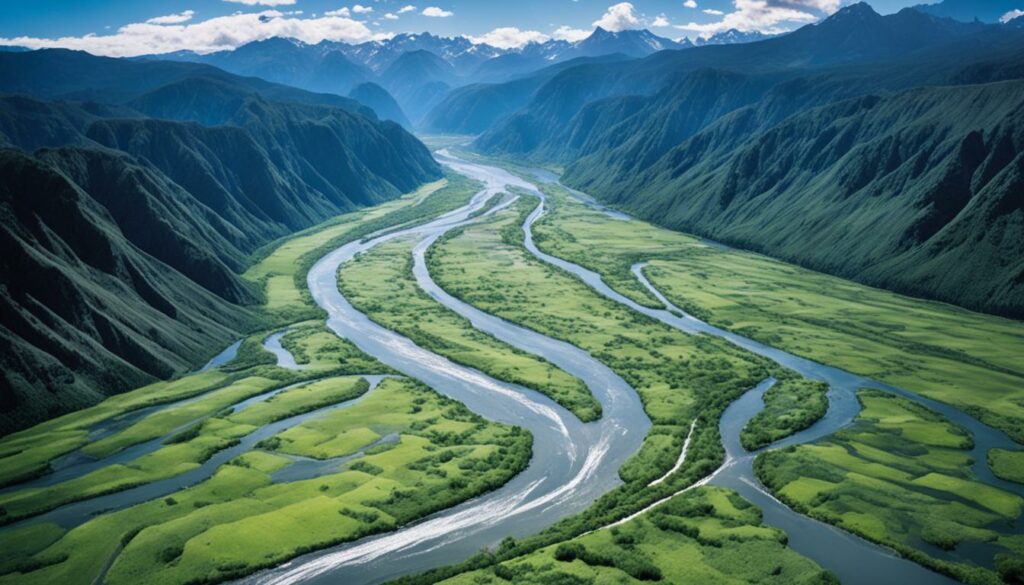
These studies are essential for dealing with local water issues. They help close the gap in our knowledge, which often stops us from managing water well. Knowing about water locally is critical for protecting our water and ecosystems.
Hydrological networks are important for many sectors. They help with planning, designing, and running water systems. They also predict floods and manage how much water flows in the environment. Plus, they make sure that the water we use is safe.
| Aspect | Record Length Needed | Remarks |
|---|---|---|
| Storage Yield Analysis | 10 to 20 times the critical period | Longer in arid regions: up to 100 years |
| Design Rainfalls Analysis | 40 to 50 years | Affects power of statistical tests |
| Water Withdrawals in the US (2010) | 355 billion gallons/day | Data supports planning and regulation |
Looking at the benefits of hydrological data shows how important long-term records are becoming. It points to the need for better monitoring. This way, we can collect high-quality data for water management.
Having good hydrological data can lead to new ideas and uses. This data is only as good as what we do with it. Making sure the data is accurate is vital for managing water wisely.
Hydrological studies are not just about big projects. They also help with small issues like drainage. Their importance ranges from helping with large-scale water projects to small community needs.
Watershed management tackles a variety of issues. This includes planning for sustainable land use, controlling erosion, managing water quality, and restoring habitats. These steps are vital in ensuring clean water and looking after our environment.
Environmental engineers are key in this process. They work on problems like securing water supplies and protecting against floods. They start by studying the current state of watersheds. This involves collecting data, assessing risks, and studying the ecology.
Protecting watersheds begins with smart land use. This means planning where and how human activities can happen, while keeping water safe. Techniques like using special materials to prevent soil from washing into water bodies help a lot.
To keep water clean, we might set up natural filters or plant more trees. This improves habitats and helps watersheds to store water. Such efforts boost the variety of species and the benefits we get from the natural world.
Today, we have high-tech tools to help manage watersheds better. These include satellites, special maps, water monitoring systems, and tools to aid in making decisions. They improve our ability to work with nature for a healthier water system.
| Technique | Purpose | Examples |
|---|---|---|
| Sustainable Land Use Planning | Minimise human impacts | Zoning, Preservation |
| Erosion Control | Prevent soil runoff | Erosion-control blankets, Silt fences |
| Water Quality Management | Filter pollutants | Wetlands, Vegetative buffers |
| Reforestation and Habitat Restoration | Improve ecosystem services | Reforestation projects |
There are hurdles in managing watersheds too. These include not enough resources, difficulty in engaging all interested parties, and a lack of updated information. The way ahead is to deal with the effects of climate change by using new tech like artificial intelligence and big data.
Involving the public is crucial for success. Educational outreach and teamwork with locals, officials, and businesses are critical for good watershed management. These partnerships are key to covering all bases in keeping water clean and nature thriving.
Checking up on our work and helping landowners make changes when needed keeps the ball rolling. Things like loans or expert advice help make sure we keep improving the state of our water and environment.
Water management is key in river deltas due to more people and climate change. This adds pressure to the area. Conventional methods rely on future predictions and social trends.
Scenario analysis is vital for understanding different future impacts. It helps in creating strong strategies for each possible scenario.
It’s essential to adapt policies over time. This means making changes as we learn more and as needs change. Using models can help us make decisions despite uncertain factors.
Integrated Assessment Meta Models (IAMMs) help a lot. They point out different paths for managing water sustainably. These models look at the effects of cutting down emissions and adapting to climate change.
The Perspectives method helps us see different views on water management. It groups people by their management strategy choices. It explains how future changes will affect water and society.
Goal 6.5 aims for better water management. It’s crucial for growing economies and lessening poverty. Water security means using water well and reducing harm.
The World Bank works to make water more secure for its clients. They focus on fighting climate change and ensuring stable water sources. These efforts help countries grow their economies and reduce poverty.
The World Bank helps nations improve water security. They aim for sustainable water use, reliable services, and less risk. Their work adapts to changing societal needs and situations.
Using efficient irrigation systems and reusing wastewater in farming is a must. This helps save water and grow more crops. More than 80 percent of our water goes to farming. So, it’s really important to use water smartly in agriculture.
In places like south-eastern Spain, where it doesn’t rain much, good irrigation is key. Drip systems and using ponds for water are common here. They cover a lot of land, around 32,554 hectares of greenhouses. These methods save water and make sure farmers there don’t run out of this precious resource.
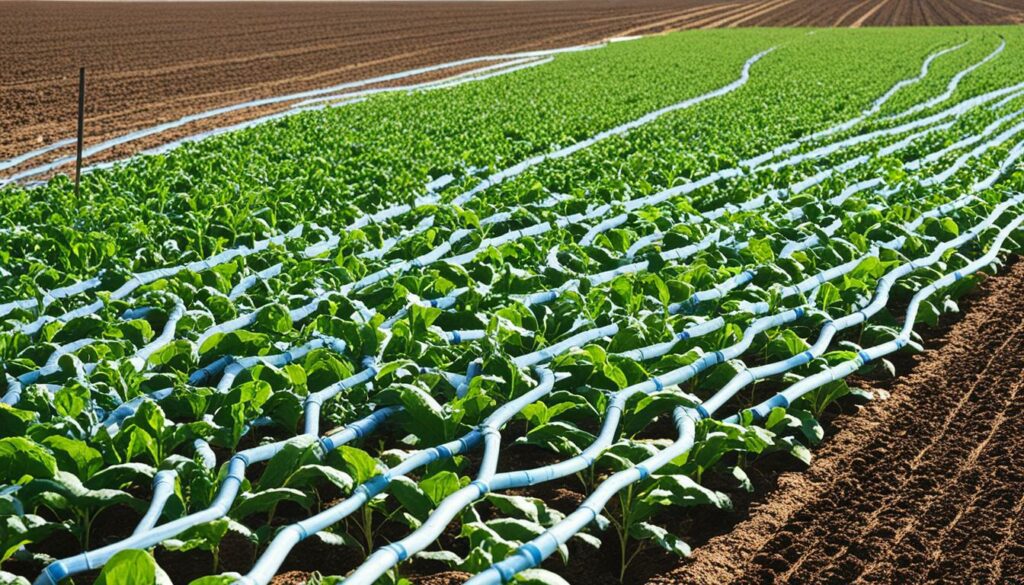
Programmes for managing water well focus on growing more and using less water. One example is the Irrigation Innovation Consortium. It’s a team effort between the government and private groups. They work to make and use irrigation tech that doesn’t waste water or energy.
Reusing wastewater in farming is a smart way to fight water shortage. By cleaning and using this water, farmers can grow crops without using up new water. It’s a way to save fresh water and stop too many nutrients getting into our seas from farming.
In the EU, about 7-8% of farmland is watered this way each year. The EU is serious about doing things the sustainable way. They’ve put a lot of money, about €420 million and €145 million, into water projects. These projects help farmers use water smartly with new technology and good methods.
| Stakeholders | Influence |
|---|---|
| Farmers | Adopt and implement sustainable water practices |
| Policymakers | Develop regulations and support programmes |
| Researchers | Innovate and validate new water management techniques |
Even though there are new technologies and better ways to manage water, some places are slow to use them. Places like south-eastern Spain have their reasons. Things like cost and how their farms are set up can be tricky. But with easy tech access and talking to other farmers, these eco-friendly ways can spread fast.
Urban areas face big challenges with water. This is more true now as the demand for clean water grows and our water systems get older. In 2022, 45% of the European Union warned of drought. This shows the urgent need for better urban water management and stronger water systems. Leaks in the US waste around 2.1 trillion gallons of water each year. This is a big reason to improve our water infrastructure fast.
In the US, many cities still have combined sewer systems. These often overflow into natural waterways, causing pollution. We need to update these systems to keep our environment clean. It’s crucial to use new technology in managing city water. This includes predicting and stopping leaks and spills before they happen.
Leaking pipes waste a lot of water, about 23% in the UK and the EU. So, saving water is very important. Finding new ways to conserve water in cities is crucial. In India, many people live in places without proper sanitation. This makes it hard for them to get essential services. Working together is key to solving water challenges in cities. This includes everyone from local people to leaders and companies.
There are also deep social issues tied to water access. Some groups, like women and those with disabilities, often struggle to use toilets. We need to build facilities that everyone can use safely. This shows the need for smart planning and methods for using water in cities.
| Statistics | Details |
|---|---|
| Potable Water Lost Annually | 2.1 trillion gallons (US) |
| Public Water Supply Lost Due to Leaks | 23% (UK and EU) |
| Combined Sewer Overflow Events | 75,000 times (US) |
| Population in Informal Settlements (India) | 64 million |
| Global Economic Loss Due to Leaks | $15 billion USD |
Improving water systems and using better methods to save water are very important. These efforts need to be a key part of city planning. They will help make urban water management more sustainable, effective, and fair.
Restoring ecosystems is crucial for our planet’s health. These projects focus on making natural water systems better. They also help save different kinds of plants and animals. This makes our ecosystem stronger against bad changes.
In 1997, Costanza et al. showed how much the world’s ecosystem is worth. Their study led to more research about ecosystem services. In 2017, this research gave us a deep look at nature’s benefits.
In 2015, Wong et al. linked the features of ecosystems to what they give us. Their work is important for making good public decisions. It shows the value of knowing about ecosystems when we want to help them get better.
Fang et al. looked at how fixing the Yangtze and Yellow Rivers helps. They saw a positive change when both nature and human factors were looked at. Sun et al. in 2014 checked how we use the land in China’s Loess Plateau affects soil loss.

From 2001 to 2010, Lu et al. saw how projects in China helped store carbon. This is important for keeping biodiversity. Hao et al. in 2017 looked at how weather and land changes affect what nature offers.
Both cities and the countryside see benefits from these studies. De Valck et al. in 2019 studied how old sites in cities can be developed without harming nature. The Research Services Council work on making damaged places nature-friendly again.
Restoring estuaries is another study area. The U.S. Army Corps of Engineers has it as a key goal. They work on projects like fixing wetlands and forests near water. These projects are overseen by different groups, such as Section 206.
Below is a summary table of important ecosystem service studies over the last twenty years:
| Year | Study | Focus |
|---|---|---|
| 1997 | Costanza et al. | Value of ecosystem services and natural capital |
| 2015 | Wong et al. | Linking ecosystem characteristics to final services |
| 2021 | Fang et al. | Impacts on Yangtze and Yellow River basins |
| 2017 | Hao et al. | Climate and landscape pattern changes |
To wrap up, saving ecosystems is more than just protecting nature. It’s about keeping water systems healthy too. By learning from many studies, we can take care of the environment. This way, we leave a better world for those who come after us.
Monitoring water quality is crucial for the environment and our health. It helps control pollution and ensures water treatment works well. We check water for harmful stuff like nutrients, metals, and pesticides to keep our water safe.
A study by Hu et al. in 2016 shows how placing sensors can find contamination in water pipes. This helps make pollution control better. Jabatan Alam Sekitar’s 2020 report also says watching water quality closely is very important.
Statistical data further highlights the efficacy of diverse monitoring methods:
| Study | Focus | Region |
|---|---|---|
| Nurul-Ruhayu et al. (2015) | River pollution detection using water quality index | Penang Island, Malaysia |
| Salunke and Kate (2017) | Advanced smart sensor interface system | India |
| Ragavan (2016) | Real-time water quality monitoring system | VIT University |
| Højris et al. (2018) | Detection of drinking water contamination using an optical real-time bacteria sensor | Denmark |
New technology is making water quality monitoring better. Real-time monitoring systems are now a key part of water treatment. These systems, according to Saravanan et al.’s 2018 findings, use technology like IoT and SCADA for quicker pollution detection.
Also, many private groups and volunteers help monitor water quality. This includes universities and watershed associations doing important data work. The EPA’s STORET system is a big help. It stores lots of water quality information, helping us fight pollution and improve water treatment.
We must keep up with new research and tech in our water monitoring efforts. This way, we make sure our water data is up to date and useful. It’s critical for keeping our water clean and healthy for everyone.
It’s vital to really understand water governance frameworks to tackle big water issues worldwide. These systems have water governance policies and regulatory frameworks in water management. They need strong cooperation and follow-through globally.
Good water governance needs solid policies and rules. Groups like the European Water Regulators (WAREG) make a big difference in Europe. By having detailed rules on water, we can fight problems like not enough water, polluted water, and climate change. This makes sure plenty of people are involved and accountable. The OECD provides key guidance in water management, showing how to work together well and have clear policies.
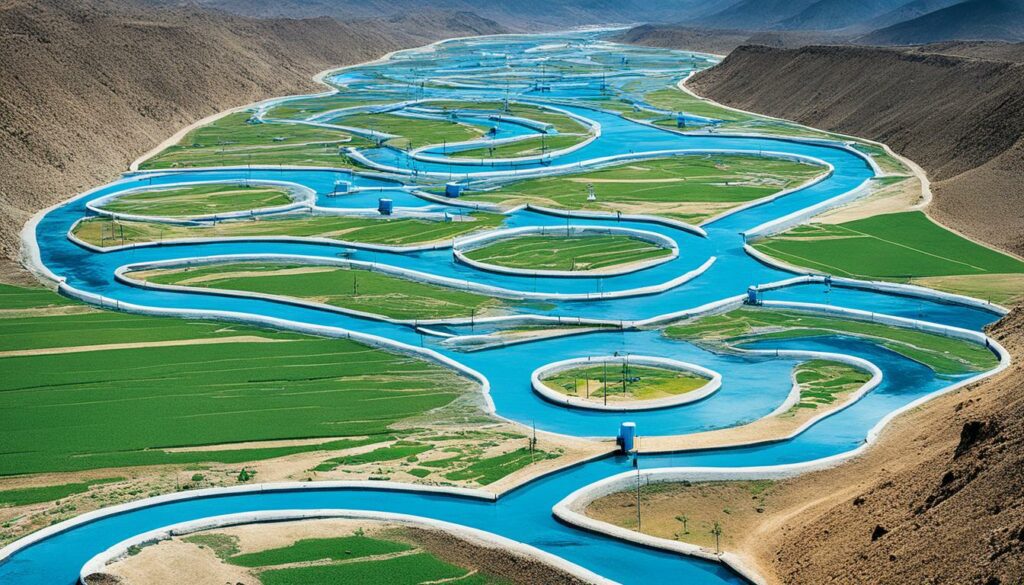
Working together worldwide is key for solving water problems. Everyone from big international groups to local communities plays a part in water management. Sharing the effort between all these groups and having lots of different voices at the table helps solve complex water issues. This way, we can be honest, clear, and invite everyone to take part, fighting corruption and aiming for a sustainable water future.
The table below outlines key actors and their roles in water governance:
| Actors | Roles |
|---|---|
| Governments | Policy formulation and implementation |
| Regulatory Agencies | Ensuring compliance and standard-setting |
| NGOs | Advocacy and awareness |
| Private Sector | Investments and innovations |
| Communities | Grassroots participation and resource management |
| International Organizations | Global cooperation and resource funding |
Combining the efforts of all these key players helps build a strong water governance system. This kind of teamwork is vital for making sure water goes where it’s needed, fairly.
Water pricing innovations are key in creating sustainable water systems. They help manage water demand in cities better. Methods like using more water if you pay more and charging for pollution aim to make us use water wisely. They also encourage us to change how we use water so it meets economic and green goals.
In the past thirty years, engineers have used new tech to make city water systems better. But, making these systems truly different faces challenges due to a lack of new ideas in managing urban water. Climate change, cities growing, and old systems breaking add more stress. To handle this, some experts suggest big changes, like focusing more on the way we use water, rather than just the amount. This could mean smaller water systems, working with the local community more, using water trading, better tech, and protecting the environment.
New tech, like turning sea water into fresh water, and ideas like working together across a region, help to run water systems better. There’s also using smart devices to manage water smarter. But, how big changes happen in these systems also depend a lot on the rules and groups of people making decisions. These can sometimes be more of a barrier than money or technology challenges.
Places with little water can really benefit from smart water use plans, like China’s recent efforts. China plans to make its water safer by 2025. It will do this with water-saving steps, managing water and natural areas well, and using smart tech to watch water use and quality all the time. Big groups, like towns and industries, working together can also help. They can make water use and its handling more effective. This is all part of making water use more sustainable.
Looking closely at efforts to change how we pay for water shows they can make both money sense and environmental sense. This helps build city water systems that are not just better but ready for the future.
Decentralised water systems offer hope in the face of the world’s water crisis. They are particularly critical in far-flung and underprivileged areas. Currently, 2 billion people lack safe drinking water, and 4 billion deal with severe water insecurity every year. Decentralised systems provide a way for communities to handle their water needs.
New technologies play a vital role in this field. Teams are working on making modular, adaptive, and decentralised water systems that are effective. These systems have grown a lot, now using advanced methods like electrochemical oxidation. It’s a big deal because it cuts down energy use significantly. For example, it has reduced energy use to below 1 kWh g−1 COD for removing surfactants from greywater. This shows how effective decentralised water systems can be.
Decentralised water systems bring several good things, like saving energy, better air, and helping the environment. However, they do have their problems. They can sometimes hurt the fairness of water distribution. With so many people living near the coasts, making sure everyone has a fair share of water is key.
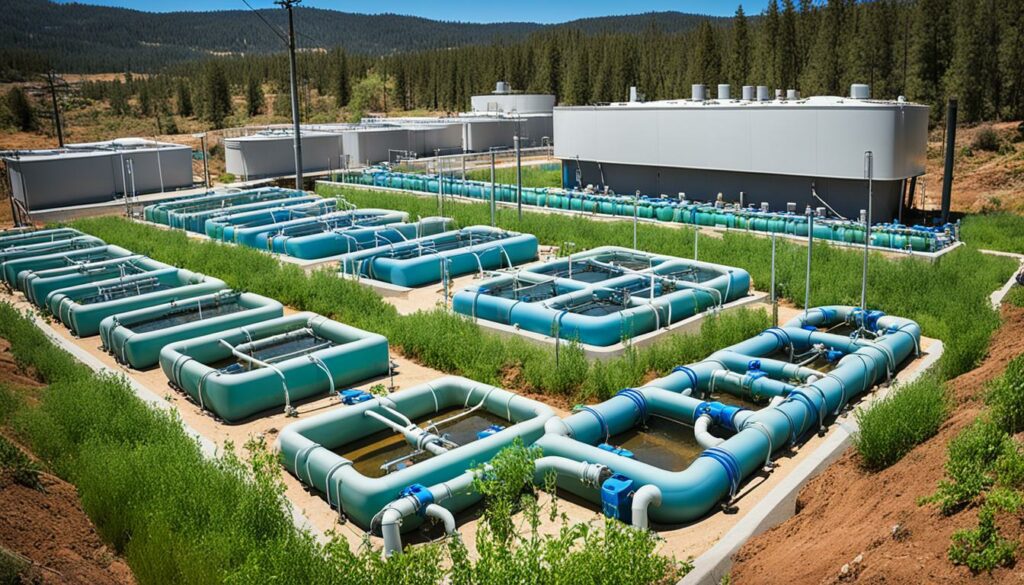
Experts have put forward many ideas to better decentralised water infrastructure. For one, they suggest we focus more on water in Green Building projects. They also think funding local water projects is important. These approaches help with the actual use of water technology. They also encourage wider talks about how to best manage our water in sustainable ways.
Decentralised water systems can help central systems work better. By using water-saving tools, rain gardens on roofs, and treating and reusing water where it’s used, we can make a difference.
Changing how we plan, fund, and look after water can support decentralised systems even more. It takes a collective effort from many sectors to succeed.
| Benefits | Challenges |
|---|---|
|
|
To sum up, moving to decentralised water systems is a vital step in solving the global water crisis. It’s more than just new technology. It’s about bringing together many voices and skills to make real change. By using the best technology and our best ideas, we can reach a place where everyone has safe water.
Climate change is clearly changing our world, making water scarce in many places. This change is making it hard for people to find enough water. Around the globe, we’re seeing less water on land every year.
Experts predict that by 2050, billions more people will face severe water scarcity. This will be a big jump from the situation in the early 2010s.
Only a tiny fraction, 0.5%, of Earth’s water is fresh and available for use. So, we really do need smart plans for dealing with water. The risk of floods is going up.
The ice in the Arctic is also melting fast. It’s getting so bad that soon, there might not be any ice in the summer. All these changes are making our water supplies less reliable.
Many places around the world are already seeing big changes in water levels. If we can keep global warming under 1.5°C, things might not be so bad. The number of people without enough water could be cut in half.
But, to do this, we need to work much harder to slow down climate change. Our efforts need to increase a lot to make a real difference.
Coming up with smart ways to manage water is key. Places that rely on melting glaciers are already seeing less water. It affects a lot of people.
One smart idea is to set up flood warnings. Investing in these systems is worth it. They help prevent big losses when floods hit. We all need to use water wisely and use new tech to soften the blow of climate change on water.
Across years, flood prevention tech has changed a lot. We’ve moved from old ways to new ways that are better for the planet. This shift is super important because floods can hurt many people and cost a lot of money. They are especially bad when cities grow fast and the weather gets more extreme. Now, watching water levels closely is key to keeping people safe from floods.
There are many types of floods, like river, urban, flash, and coastal floods. They often happen at the same time. This can make flood problems even worse. Floods are getting more common because of climate change, more people, and changes in how the ground is used. To fight this, many places use nature and smart planning to lower the risk of floods.
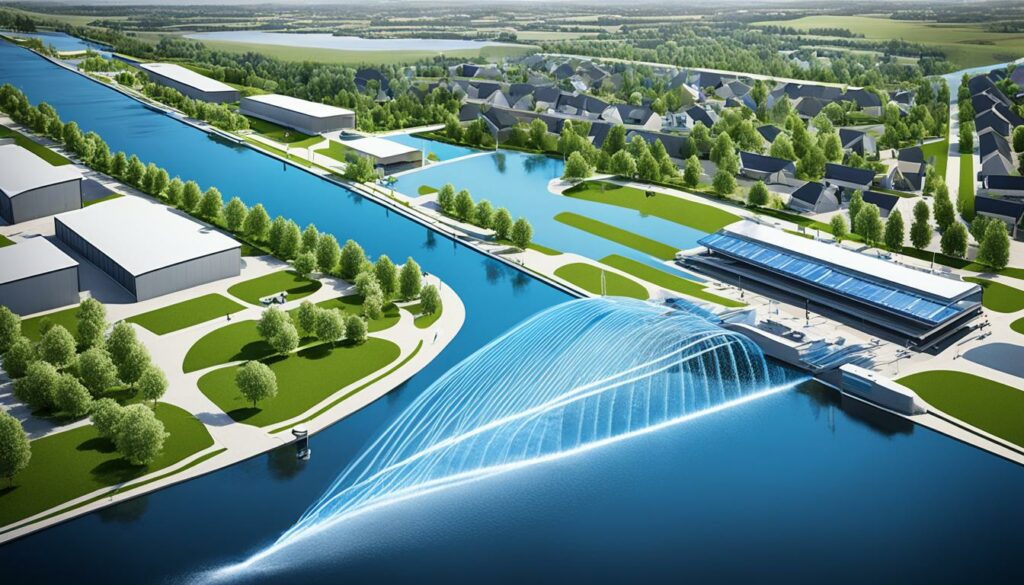
In the Netherlands, the Delta Programme is a great model. It created more space for rivers, making floods less likely. Nature-based solutions have also worked well in reducing flood risks and coping with climate change. In China, they came up with the idea of a “sponge city”. This shows how we can make cities that handle floods better.
The International Conference on Flood Management (ICFM) now focuses on being ready for floods, not just stopping them. This new way of thinking is supported by the latest research. The research looks at how we can be more ready for floods and how to deal with the risks floods bring.
Looking at flood studies from 2000 to 2020, we see a lot about floods in cities and bigger areas. We also see how climate change is making floods worse. Researchers use tools like GIS and remote sensing to understand floods better. Thanks to this, we’re making better ways to deal with floods. This helps us protect people from the dangers of floods.
Exploring water management shows how complex and urgent the challenges are. Around a billion people in Asia-Pacific lack safe water. This means, we need new ideas and everyone working together. Countries like Australia and Canada are leading the way with new systems. They aim to stop water loss and meet global standards.
Still, there’s not one answer for all water problems. Each area is different, needing its own solutions. Government rules can also make things harder. With 2 billion more people needing water in 2030, we must be smarter. We need strong, long-lasting plans given fewer investments in crucial areas.
Better farming and accounting for water can make a big difference. New water tech, like reusing wastewater, can also help a lot. The key to saving water is teamwork, smart plans and caring for our resources. The path to ensuring enough water for everyone is full of challenges. It calls for always looking for better ways and working together closely. This is the only way to make sure water is available for future generations.
Water management research shows we must tackle climate change and a growing population. It points to using water wisely, updating utilities with digital tech, and using data to make smart policy choices.
Good water governance means handling water resources well, for everyone fairly. It mixes smart ways to save water with sharp decision-making. These are key steps to deal with climate change and more people needing water.
Using tech like artificial intelligence and smart meters, digital water management keeps an eye on the water system. It makes things more efficient, cuts down on lost water, and makes sure we use our water well.
Nanotechnology is a key player in high-level water filtration, removing even tiny pollutants. Things like nanomembranes which don’t need energy to purify water are modern, green ways to get us clean water.
New strategies look at using tech to save water in everyday life and on farms. They also get the public involved through campaigns and apps. Everyone working together can make a big difference in saving water.
Studies on water flow and quality are super important for managing our water well. They help create good plans and fill in any missing information. This work is key for keeping our water in good shape.
Watershed management is about taking care of the land and water together. It includes planning how we use the land, improving water quality, and getting everyone involved to help.
Recent tech developments are changing how we clean and reuse water. They make classic processes better and cheaper. This means we can look after our water even more carefully.
Farming uses efficient sprinkler systems and treats water to use again. These steps help farms save water and grow food in a way that’s good for the environment.
Cities struggle with old water systems and more people needing clean water. Updating these systems and encouraging everyone to save water city-wide are part of the solution.
Fixing up natural areas helps keep our water and wildlife safe. It makes the environment stronger against things that might harm it.
Checking water quality is key to stop pollution. It makes sure our water is safe and in good shape for nature.
Water rules and working together globally help keep water safe and plenty. They make sure everyone acts responsibly so we can all enjoy clean water.
Changing how we pay for water can make us use it wiser. It encourages everyone to save water, which is good for our water supply long term.
Decentralised water systems are small, local ways to get clean water where it’s needed. They use new tech to work well without a central system.
Climate change makes it harder to find enough water by changing how much rain we get and how quickly water evaporates. We have to adapt and use water wisely to make sure we have enough.
Today, we use advanced tools like weather radars and drones to predict and stop floods. They’re important for keeping us safe from too much water.